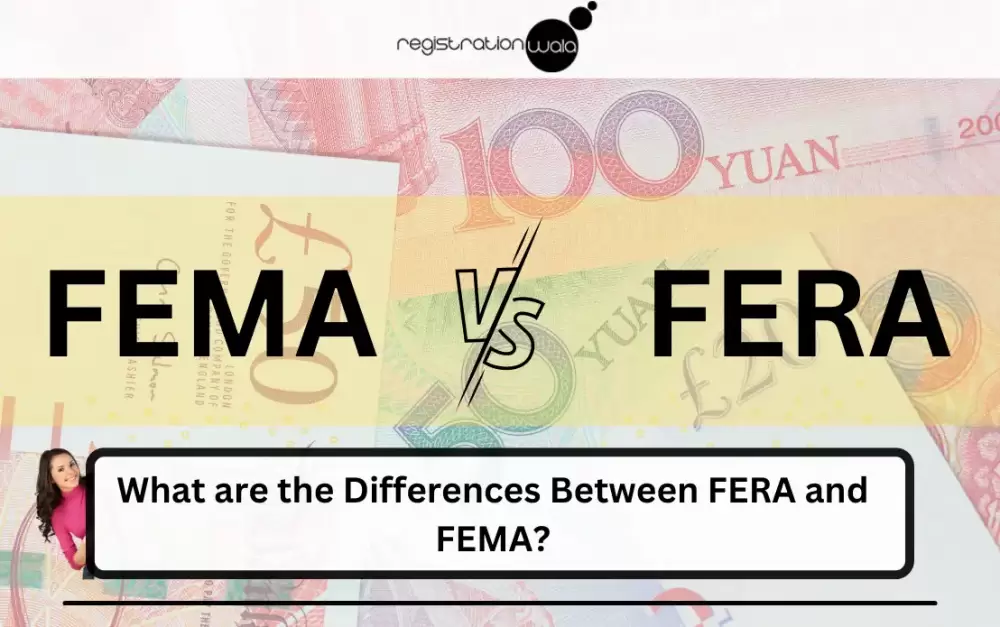Understand the Differences between FERA and FEMA
- July 11, 2023
- Registrationwala

- Home
- /
- Knowledge Base
- /
- Regulatory License
- /
- FEMA Consultants
- /
- Understand the Differences between FERA and FEMA
Understand the Differences between FERA and FEMA
Foreign exchange is a way of trading one currency to another. For instance: INR can be swapped into UDS. And the market that allows foreign exchange or called Foreign Exchange Market or Forex.
This is one of the most profitable and liquidated markets in the world, where trillions of dollars flow every year. In this, banks, brokers, institutions, and individual traders are included from the whole world.
Before 1999, the FERA Act was followed for the forex markets, but because it was limiting the development of the Indian economy, the FEMA Act was launched by the Parliament of India. Below is the difference between FEMA and FERA.
What is FERA?
The FERA stands for Foreign Exchange Regulation Act. It was passed in 1973, and it into existence on January 1st, 1974. The act was passed to regulate and monitor foreign exchange duties and transactions. There are 81 sections in the FERA Act, it was introduced when the Forex reserve of the country was very low.
Role of RBI
The Reserve Bank of India has the power to authorize a company or individual for dealing in foreign exchange. For dealers, RBI has the power to authorize them to deal in foreign currencies and revoke the authorizations in case of non-compliance.
If the money is not used for the reason, which it provides for. Then the money must sell to another dealer within 30 days. No person can make transactions without the permission of RBI with a partner, who is a non-resident of India.
The FERA faced some criticism and backlash from economic experts. Because it was hindering the growth of modernization of Indian industries. That’s why the Parliament of India introduced FEMA.
What is FEMA?
The Foreign Exchange Management Act (FEMA) was launched on 29 December 1999 by the Parliament. This act replaced the FERA Act by following the guidelines and framework of the World Trade Organisation (WTO).
Currently, there are only, 49 sections present in the FEMA Act. It provides a set of regulations to empower RBI to pass regulations and allow the Indian government to implement these rules related to foreign exchange concerning the country’s foreign trade policy.
The act empowered the RBI to place restrictions and provide regular input to RBI. Also, it allowed Indian nationals to trade in forex and own immovable property outside India.
Difference Between FEMA and FERA
The following are the differences between FEMA and FERA:
Conclusion
So, these are the differences between FEMA and FERA. The FEMA was launched to manage forex trading and measure the liberalized economy. Both are important in managing the forex exchange, but FEMA has a more liberalize approach, which focuses on managing and boosting foreign exchanges.
People also read: What are the Objectives of FEMA?
- 2808 views
